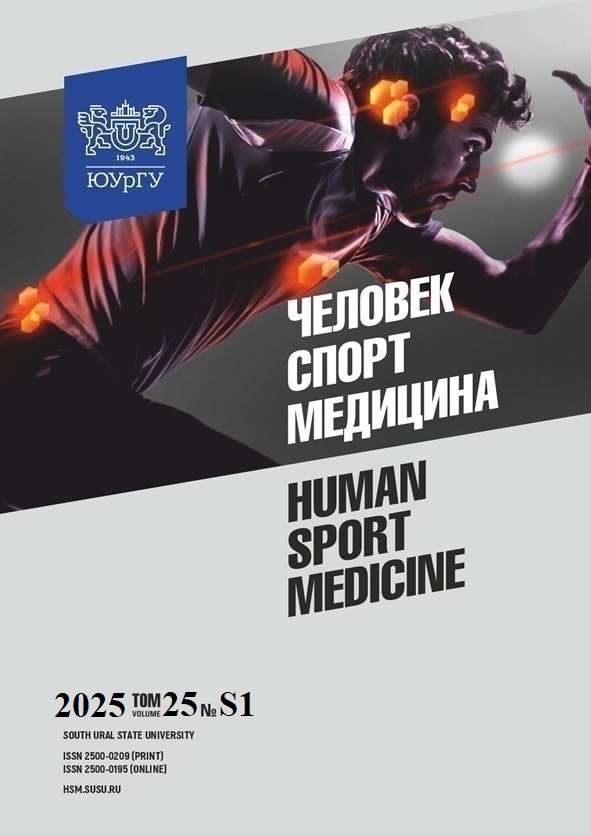AEROBIC CAPACITY IN CROSS-COUNTRY SKIERS AT ANAEROBIC THRESHOLD AND VO2 max
Abstract
Aim. This study investigated gender-specific differences in aerobic capacity parameters among cross-country skiers, focusing on the ratio of anaerobic threshold and VO2 max and the contribution of external respiration indices to oxygen delivery mechanisms. Materials and methods. A sample of cross-country skiers (21 females and 10 males) underwent incremental load testing on a Cosmos Quasar treadmill, with concurrent gas analysis to assess aerobic capacity. Results. Male athletes demonstrated superior aerobic capacity in VO2 max power zones compared to anaerobic threshold zones. Gender disparities were observed in the anaerobic threshold / VO2 max ratio: while males demonstrated higher values in some cases, females surpassed them in others. However, the results obtained at VO2 max consistently exceeded those obtained at anaerobic threshold across both groups. Conclusion. Aerobic capacity utilization at anaerobic threshold and VO2 levels was more efficient in males, attributable to inherent genetic and physiological advantages. The results obtained underscore the need for gender-specific training protocols in cross-country skiers for performance enhancement.
References
References on translit
Copyright (c) 2025 Human. Sport. Medicine

This work is licensed under a Creative Commons Attribution-NonCommercial-NoDerivatives 4.0 International License.















